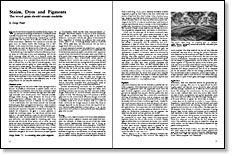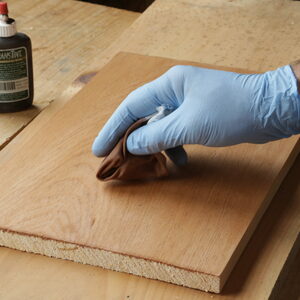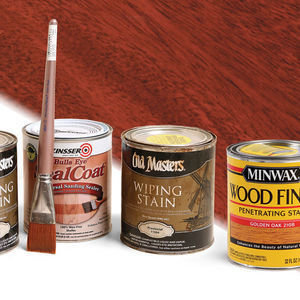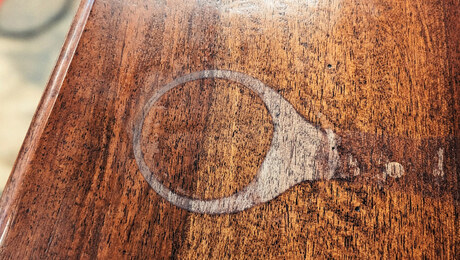
Synopsis: George Frank calls woodfinishing the stepchild of woodworking. Even its vocabulary is poor and misleading, he says. He explains the difference between dyeing and staining, how to read the wood, and how to apply stains, dyes, and pigments. He offers examples to illustrate the possibilities of changing the color of wood with chemical action, the surprising history of dyeing, and pigment problem-solvers. In his closing section on applying these colors, he advises how to mix them with water, alcohol, lacquer thinner, wax, varnish, and shellac.
From Fine Woodworking #12
We all love wood because of its endless variety of grain. To put the natural markings of the wood in evidence is the true task of anyone who tries to beautify it through finishing. Concerning beauty in woodfinishing, I have set up a rule for myself: The first requisite of a beautiful finish is that the wood must remain “readable.” This means not only that the grain must be clearly visible after finishing—that is selfevident. It also means that from the grain of the wood, qualified people can read the whole history of the tree: its origins, age and environment, its fights for survival, its adventures.
Woodfinishing is the stepchild of the woodworking industry. Even its vocabulary is poor and misleading. We use the word “staining” when we refer to a chemical action that changes the color of the wood, to a process where a dye brings this change about, or to a process where we cover the wood with a colored film, or a thin layer of colored pigment. Only this last method should rightly be called staining. The first two should be called dyeing. The difference between dyeing and staining is like the difference between getting a deep suntan and using makeup to imitate one. While stains always reduce the readability of the wood, they have great merits, especially on the production line. Ease of application is one, but far more important is that stains help to achieve uniform coloring, and this, especially on the assembly line, is a fair compensation for the reduced readability.
Chemical action: Cuban mahogany has the color of raw steak. Sponge it with a solution of potassium dichromate, a yellow crystal, and its color deepens considerably. Not only does it become a dark rusty red, but the contrast between the light and dark markings becomes more accentuated. This chemical process, wrongly called staining, really enhances the beauty of the wood. Napoleon’s craftsmen often used this process, and most French Empire furniture is “stained” by this method. It is a well-known fact that wheat-colored oak becomes brownish-grey when sponged with ammonia.
For the full article, download the PDF below:
Fine Woodworking Recommended Products

Foam Brushes






















Log in or create an account to post a comment.
Sign up Log in